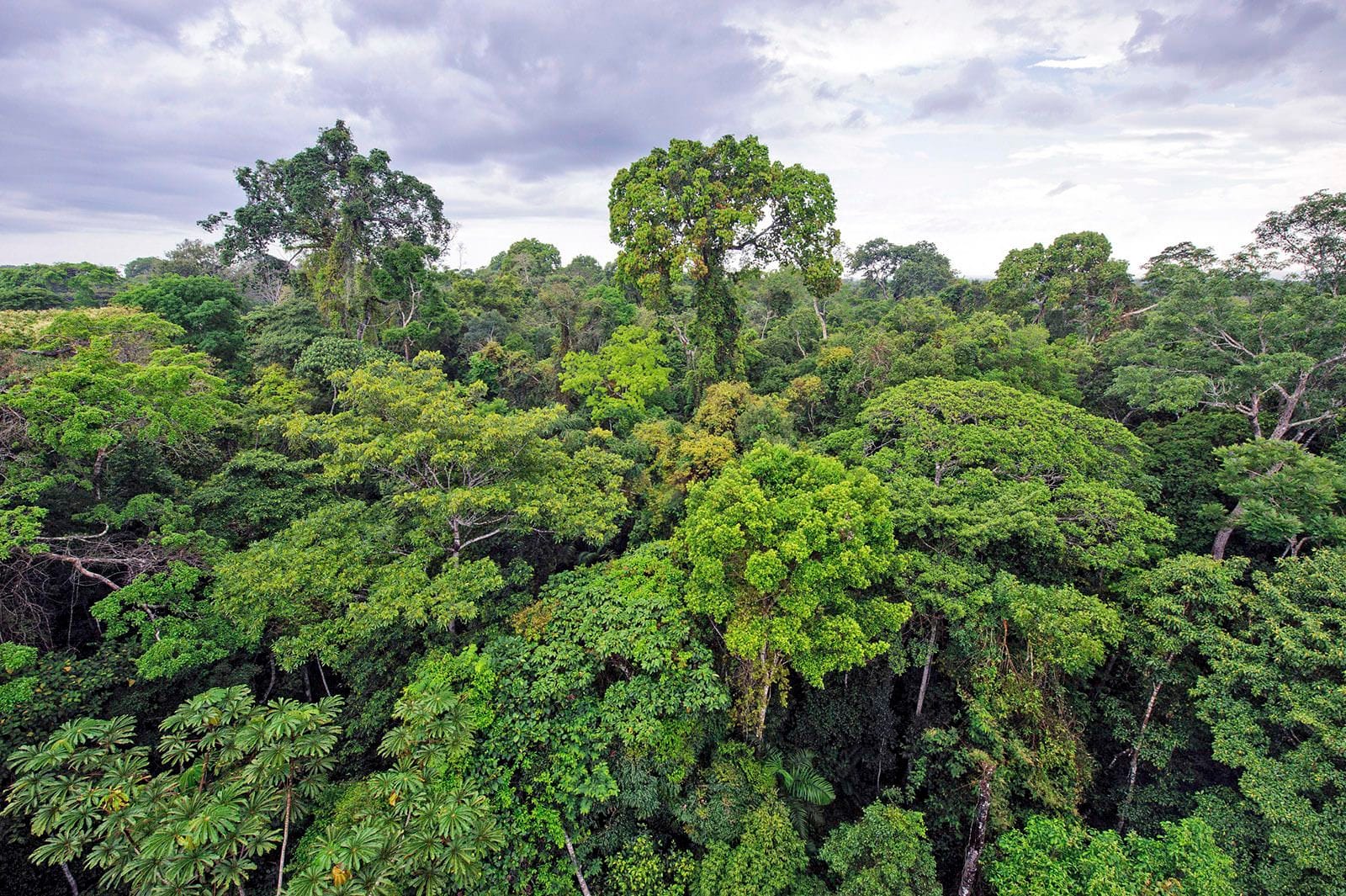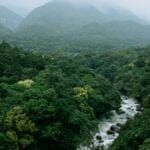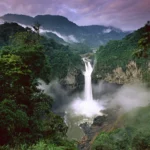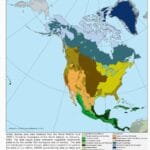Get ready to dive deep into the incredible world of rainforests, those amazing green gems of our planet. These lush ecosystems are like treasure troves of life, hiding secrets that will amaze you. From being oxygen factories that keep our air clean to providing shelter and food for millions of animals and plants, rainforests are vital for the health of our planet. So, let’s uncover the wonders of these green giants and understand why we need to protect them for generations to come.
10 Facts About the Rainforest
Rainforests, those lush and vibrant jungles we see in documentaries, are more than just pretty landscapes. They’re like the Earth’s beating heart, bustling with life and crucial for the health of our planet. Let’s dive into some amazing facts that make rainforests so incredible:
- Overflowing with Life: Imagine a place so packed with unique plants and animals that scientists believe we haven’t even discovered half of them yet! That’s a rainforest for you. They’re like the ultimate biodiversity hotspots, housing a mind-blowing 50% of all the plant and animal species found on land.
- Earth’s Lungs: Ever take a deep breath of fresh air and feel instantly better? Thank a rainforest! They’re constantly working hard, pulling in carbon dioxide and releasing oxygen through photosynthesis. In fact, they’re responsible for a fifth of the world’s oxygen supply.
- Nature’s Grocery Store (and Pharmacy!): Those delicious fruits, veggies, and spices we enjoy? Many of them originated in rainforests. But it’s not just food – rainforests are teeming with plants that have been used for medicine for centuries. Scientists are constantly discovering new plants with the potential to treat all sorts of diseases.
- Climate Change Warriors: Rainforests are like giant sponges, soaking up enormous amounts of carbon dioxide from the atmosphere. This helps slow down climate change by keeping those greenhouse gases in check.
- Water Protectors: Rainforests play a crucial role in keeping our planet’s water cycle balanced. Their thick canopies act like giant umbrellas, catching rainfall and releasing it gradually. This prevents floods and erosion and ensures a steady flow of water to rivers and streams.
- Home to Indigenous Cultures: For centuries, indigenous communities have lived in harmony with rainforests, relying on their resources and possessing a deep understanding of their delicate balance. Their traditional knowledge is invaluable for conservation efforts.
- A Medical Marvel: Imagine a treasure chest filled with cures for some of humanity’s most challenging diseases. Rainforests are like that – a source of countless medicinal plants. Many of the medicines we use today originated in these vibrant ecosystems, and scientists believe there are countless more waiting to be discovered.
- Facing the Heat of Climate Change: Sadly, rainforests are incredibly vulnerable to climate change. Rising temperatures, shifting rainfall patterns, and deforestation are putting a strain on these precious ecosystems. Their survival is closely linked to our efforts to combat climate change.
- Living Laboratories: Rainforests are like giant, outdoor classrooms for scientists. They offer endless opportunities to study biodiversity, climate change, and the intricate workings of nature. Each discovery deepens our understanding of the planet and our place in it.
- Sustainability is Key: Rainforests can provide resources and livelihoods without being destroyed. It’s all about finding that balance between using their resources responsibly and protecting their incredible biodiversity. Sustainable practices, such as carefully managed logging and agroforestry, are crucial for the future of rainforests.
Where are Rainforests Located – And Why Are They So Important?
Picking up where we left off, let’s delve deeper into those fascinating rainforest locations. You might be surprised to learn that these vibrant ecosystems aren’t limited to just one continent. They’re scattered across the globe, blanketing parts of South America, Africa, Asia, and even Australia! But there’s a catch – they prefer to stick close to the Equator, that imaginary line circling the Earth like a belt. Think of it as their comfort zone, where the sun shines brightly, and the air hangs heavy with humidity.
Now, for a reality check, rainforests only cover about 6% of the Earth’s surface. That might not seem like much, but here’s the kicker – they’re like bustling cities teeming with life! Scientists believe that more than half of all the plant and animal species on Earth call these rainforests home. It’s like a giant, natural apartment complex, with every nook and cranny occupied by some incredible creature.
But their importance goes way beyond simply providing a habitat. Rainforests are like the Earth’s lungs, and I’m not just talking about the fresh air they pump out. They’re absolute rock stars when it comes to climate regulation, acting like giant sponges that soak up carbon dioxide from the atmosphere and release precious oxygen back into the air we breathe. In fact, they’re some of the most important carbon sinks on the planet, playing a critical role in keeping our atmosphere in balance.
Let’s break down why these rainforests are so special, imagining them as layered cakes of life:
- The Penthouse Suite – The Emergent Layer: Picture the tallest trees stretching their branches towards the sky, basking in the sunlight. This is prime real estate for eagles, monkeys, and all sorts of birds who enjoy the high life.
- The Middle Floors – The Understory Layer: Just below the towering giants, a dense jungle thrives. It’s a world of dappled sunlight and lush vegetation, offering refuge and resources to a whole other cast of characters. Insects buzz about, snakes slither through the undergrowth, and frogs call out from their leafy perches.
- The Ground Floor – The Forest Floor: Don’t underestimate this seemingly quiet layer. It’s a world of constant activity – a fascinating mix of fallen leaves, fungi, and a myriad of insects and microorganisms working tirelessly to break down organic matter and recycle nutrients back into the ecosystem.
Rainforests: Not just for animals! We humans owe a lot to these incredible ecosystems. It’s easy to forget when we’re miles away, but they provide us with so much more than just pretty pictures:
- Foodies Rejoice: Many of the foods we enjoy – from bananas and chocolate to spices that make our meals sing – originate from rainforests.
- Nature’s Medicine Cabinet: Rainforests are like giant pharmacies, holding secrets to countless medicinal plants used for generations by indigenous communities and increasingly studied by modern medicine. Who knows what cures or treatments might be hidden within their depths?
- Cultural Connections: For indigenous peoples living in and around rainforests, these areas are far more than just a collection of trees. They are the foundation of their culture, their history, their very way of life. They provide food, shelter, medicine, and a deep spiritual connection to the natural world.
Sadly, it’s not all sunshine and rainbows. The reality is that rainforests are facing some serious threats, many of them caused by us:
- Deforestation: The Big Chop: From clearing land for agriculture and cattle ranching to logging precious hardwoods, we’re cutting down rainforests at an alarming rate. It’s like demolishing entire city blocks, leaving countless species without a home.
- Climate Change: Turning up the Heat: Rainforests thrive in a delicate balance of temperature and rainfall. As our planet warms and weather patterns become more erratic, these ecosystems are being pushed to their limits.
- Pollution: A Toxic Cocktail: Industrial activities and agricultural runoff often pollute the water and air in and around rainforests, harming the very life they support.
But here’s the good news: We can make a difference! There are amazing people and organizations working tirelessly to protect these precious ecosystems:
- Protecting What’s Left: Establishing protected areas, like national parks and reserves, is crucial to safeguarding rainforests and giving wildlife a fighting chance.
- Sustainable Practices: Doing Things Better: We can do things differently – promoting responsible logging practices, supporting sustainable agriculture, and encouraging eco-tourism that benefits local communities and minimizes negative impacts.
- Empowering Local Voices: Nobody understands the value of rainforests better than the people who live in and depend on them. Empowering indigenous communities to manage and protect their ancestral lands is vital for long-term conservation success.
The Bottom Line: Rainforests are more than just pretty places. They are essential for the health of our planet and the well-being of all living things, including us. Their future depends on understanding their value and taking action to protect them. Let’s act now, before it’s too late.
Unveiling the Biodiversity of Rainforests: What Makes Them So Diverse?
Rainforests are like the Earth’s beating heart, full of life and color. We’ve already touched upon how amazing they are, but let’s dive deeper into what makes them such hotspots for so many different plants and animals.
Factors Driving Biodiversity
Imagine the tropics: warm, sunny, and with rain practically every day. That’s a recipe for a massive party for plants and animals, and that’s exactly what rainforests are! This abundance of life isn’t just about good weather, though. Think about it: you’ve got massive trees reaching for the sky, creating a shady haven below. Then you’ve got the forest floor, where things are a bit damper and darker. All these different nooks and crannies create a sort of housing boom for all sorts of creatures, with each spot catering to different tastes and needs.
The Unique Canopy Layer
Those towering trees we talked about? They’re not just impressive to look at; they’re like the rainforest’s very own sunshade. This creates a patchwork of light and shadow on the forest floor. Some plants soak up the sunshine at the top, while others have adapted to thrive in the cooler, dimmer world below. It’s like a giant game of Tetris, with every plant finding its perfect spot.
Interconnected Ecosystems
Rainforests aren’t just stand-alone wonderlands. They’re more like pieces of a giant, interconnected puzzle. Think about where a rainforest edge might meet a grassland. These border zones, called ecotones, are like melting pots of life. Creatures from both sides mingle, making these zones even richer in biodiversity. It’s like a natural laboratory where species come together, sometimes creating something new and fascinating.
So, What’s the Big Deal?
We know rainforests are full of life, but why should we care? Well, imagine our planet like a giant house. Rainforests are like the air filters, cleaning our air and helping keep the climate stable. They’re also home to ingredients used in medicines, and who knows what other secrets they hold? Scientists are constantly discovering new species and understanding more about how these complex ecosystems work. If you’d like to learn more about a specific type of rainforest, check out these articles about the fascinating Amazon rainforest and the differences between temperate and tropical rainforests.
What We Still Don’t Know
While we’ve learned a lot about rainforests, there’s still so much more to uncover. How exactly do different species interact? How does climate change affect this delicate balance? These are just a few of the questions that keep scientists exploring and studying these vibrant, vital parts of our planet.
Rainforests and Climate Change: How Are They Connected?
We’ve already talked about how crucial rainforests are, but let’s dive a little deeper into their connection with climate change. It’s like a delicate dance between these vibrant ecosystems and our planet’s climate, where each move has a ripple effect on the other.
Rainforests: Earth’s Natural Carbon Storage
Think of rainforests as Earth’s giant lungs, constantly breathing in carbon dioxide and exhaling oxygen. They’re incredibly good at absorbing carbon dioxide from the atmosphere, which is a major greenhouse gas. This process, called carbon sequestration, is like tucking away carbon in a safe deposit box, preventing it from heating up our planet. Tropical rainforests, in particular, are like the high-security vaults in this system, storing more carbon than all other types of forests combined!
Staying Cool: How Rainforests Regulate Temperature
But rainforests do more than just store carbon. Their lush canopies release moisture into the air, which forms clouds that help reflect sunlight back into space. It’s like they have a natural cooling system in place, keeping our planet’s temperature in check. Without rainforests, the Earth would likely experience more extreme heat and unpredictable weather patterns.
Deforestation: Disrupting the Balance
Here’s the catch: when we cut down rainforests, we’re not just removing trees; we’re messing with this delicate climate balance. Deforestation releases that stored carbon back into the atmosphere, contributing to global warming. It’s like leaving the door to the carbon vault wide open. Plus, burning forests for agriculture or development adds even more carbon dioxide to the mix, further accelerating climate change.
A Glimmer of Hope: Protecting and Restoring Rainforests
The good news is that it’s not too late to act. By protecting existing rainforests and restoring those that have been degraded, we can help mitigate the impacts of climate change. Think of it as investing in our planet’s future. Planting trees, supporting sustainable farming practices, and reducing our overall carbon footprint are all steps in the right direction. For comparison, you can learn about the deciduous forest and its role in the ecosystem in this article.
The Future is Uncertain, But We Can Make a Difference
While there’s still much research being done on the complex relationship between rainforests and climate change, one thing is clear: these precious ecosystems play a vital role in keeping our planet healthy. By understanding this connection and taking action to protect them, we can create a more sustainable future for ourselves and generations to come.
- China II Review: Delicious Food & Speedy Service - April 17, 2025
- Understand Virginia’s Flag: History & Debate - April 17, 2025
- Explore Long Island’s Map: Unique Regions & Insights - April 17, 2025
















